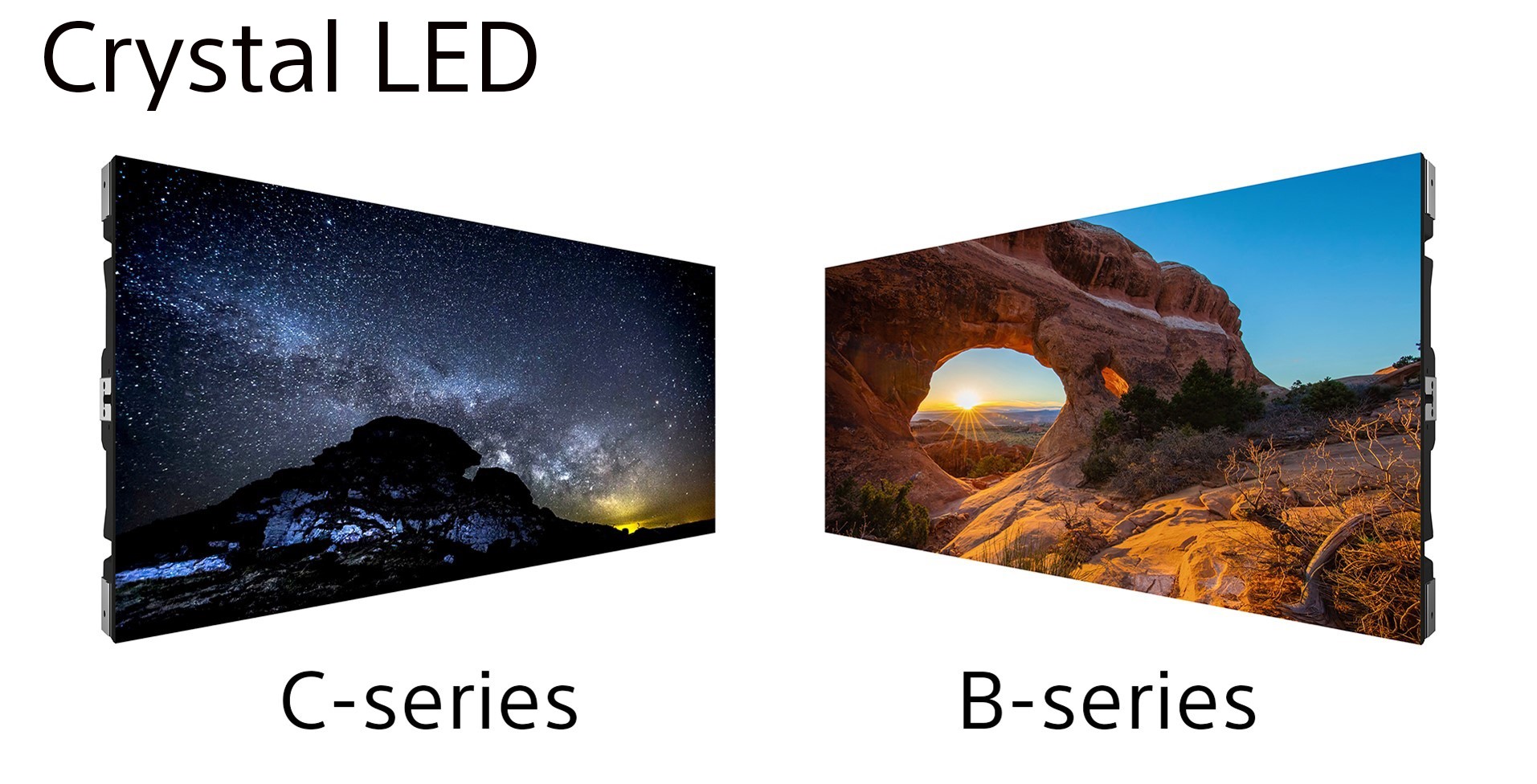Sony 'Crystal LED' MicroLED displays are gunning for OLED TVs
It might just be a while until we can get Sony's new screen tech in affordable home TVs


The sets at the top of our list of the best OLED TVs will be shaking on their brackets, because suddenly all kinds of new display technology is arriving to seize their high-contrast crown. Sony is the second company at CES 2021 to announce new MicroLED screens – which it's calling 'Crystal LED' – following Samsung announcing its own sets.
- MicroLED explained: The best TV technology you might never own
- Samsung's OLED-killing MicroLED 4K TVs revealed in multiple sizes
- Samsung Neo QLED TVs unveiled: next-gen Quantum Mini-LED tech changes the game in 4K and 8K
The new Sony B-Series and C-Series Crystal LED Displays are currently exclusively for professional use in modular form, but that doesn't mean that these MicroLED screens are to be dismissed, because the tech is still likely to pop up in challengers for our list of the best TVs in the future.
Samsung's MicroLED TV tech started out as very similar modular tech known as The Wall, after all, and now it's coming to regular TVs in a range of sizes.
Sony's B-Series Crystal LED display has an emphasis on brightness and is apparently touting an eye-melting 1,800 nits at its peak. Given that most OLEDs currently sit around 800 nits at peak, that's a serious benefit of Crystal LED compared to OLED, especially since MicroLED should offer the same kind of deep blacks as OLED.
It's also reassuring to know that Sony has worked to include options such as 120Hz playback, which means any future gaming TVs with these panels in will be ready for the best the PS5 and Xbox Series X have to offer.
The B-Series has been created in collaboration with Sony Pictures Entertainment and has been especially designed for used in virtual sets and studios. An anti-reflection coating means this is perfect for set ups like the digital background screens used for the Mandalorian, and will be used for many more series in the future, no doubt.
• Check out the best gaming TVs
• Where to buy PS5
Get all the latest news, reviews, deals and buying guides on gorgeous tech, home and active products from the T3 experts
The C-Series, on the other hand is maximised for contrast with an eye watering 1,000,000:1 ratio. While both solutions are currently designed for corporate uses such as offices, car showrooms and studios, this doesn't mean that MicroLED tech will always be out of reach.

“As we continually strive to get closer to our customers and solve their challenges, we’ve implemented the features and benefits that they value most in a direct view microLED display," says Theresa Alesso, Sony Electronics Pro Division President.
The next step of this is surely making this new Crystal LED tech work in more consumer settings. While we don't all have the money to convert a wall into a Crystal LED display, MicroLED tech can be used in home televisions, it's just currently an expensive endeavour.
As well as a choice of pixel pitch size, both the B and C Series screens also come with a new proprietary processor from Sony and support for 4K and HDR imagery. The X1 for Crystal LED processor uses the same tech from Sony's Bravia line up to ensure the right levels of upscaling and image integrity.
These modular units will be available for commercial use in summer this year and there are no prices available just yet but it's clear that it's only going to be a matter of time before we're seeing Sony's new Crystal LED tech in smaller displays, including the best phones and best smartwatches. OLED has years left but MicroLED is very much on the way.
At least we're getting some time to save up…
If you’re looking for a new TV and want to make sure you’re getting the best price, check out our constantly updated best TV deals.
Louise Blain is a journalist and broadcaster specialising in technology, gaming, and entertainment. She has a weekly consumer tech slot on BBC Radio Scotland and is the presenter of BBC Radio 3's monthly Sound of Gaming show. She can also regularly be found on BBC Radio 4, BBC Five Live, and The Evolution of Horror podcast as well as writing for GamesRadar and NME. Louise loves finding ways that tech can make our lives better every day and no, she doesn't have enough smart lighting yet.
